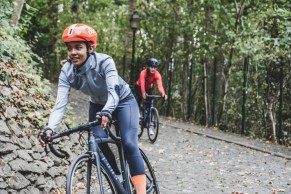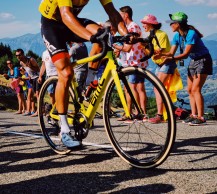How your body behaves during uphill climbs
The climbs are more demanding because they require the work of more muscles. An extra effort that is rewarded with benefits for some parts of the body. Legs, heart, core or mind are strengthened after overcoming uphill slopes.

The importance of climbs for the body: benefits for the muscles involved
Climbs can be the most feared part of our outings, but at the same time they are a training ground that offers multiple benefits. So, what happens to the body when we have to face positive slopes?
We are aware that when we climb, our breathing accelerates and our fatigue increases. The reason for this is gravity, which works against us: the steeper the slope, the more we have to push our bodies.
RECOMENDADO

When do helmets have to be changed? Do they have an expiration date?

The best apps for cycling and mountain biking

Black Friday 2025 cycling bargains: save on Garmin, POC, Maxxis and more

Black Friday Garmin 2025: the ultimate guide to choosing your GPS at the best price

Which profile wheels to choose according to the area where you live: mountain, flat or coast

How to wash your cycling clothes? 10 keys to make them always look new
The legs are the first part of the body to be strengthened. Glutes, quadriceps and calves will have to work harder than when the road is flat. In addition, there will be more muscle fibers available to help the cause and, on the other hand, the small muscle fibers will break down to re-emerge stronger when resting.
This partly explains why over time we are better able to climb a slope that we were previously unable to climb. Training the climbs will make the legs more prepared and in better shape to overcome them.

The second involved in this is the heart. Since more muscles are affected as we climb, the heart will have to work harder to deliver oxygen and nutrients to all of them. This will increase the heat, so the skin must also receive blood to help it sweat and regulate the temperature.
Translated into the language of numbers, the heart rate will be about 30 to 40 beats per minute higher than when riding flat, approximately.
Pedaling while standing up will increase your heart rate by another 5 to 10 beats. The reason is that the upper body - arms, shoulders and back - will be more involved in the effort and will therefore consume more oxygen.
With proper training, the heart will become stronger as it will increase the amount of blood per beat. In fact, a cyclist can have a heart rate 10 to 15 beats lower at rest.
The body, like any machine, needs good gears so that all the parts work as they should. It would be useless if the heart were capable of pumping the necessary blood but the body lacked the means to transport it to the muscles that demand it.
In a few words, the capillaries take care of that. By needing more blood on the climbs, the body increases the number of capillaries in the muscles.
Mitochondria are responsible for producing most of the cells' energy. On the slopes we multiply the number of mitochondria, which will help to make more efficient use of oxygen.

Core and head also benefit
Another strengthened area is the core. Abdominals, back and sides are important for two reasons. First, they are the base on which the legs work. On the other, part of the strength is transferred through the core to the lower body to increase pedaling power.
Although the climbs help to strengthen this part of the body, it can also be interesting to work it off the bike.
And finally, the other lucky one is the mind. It goes without saying that the physical aspect is a fundamental part of the climb. But the truth is that the mental part is also important when it comes to dealing with this type of situation.
Some tricks such as positive thinking and encouraging yourself or setting small goals during the climb will help you to resist, so the climbs are also a good mental exercise. On the other hand, reaching the top increases confidence and satisfaction.